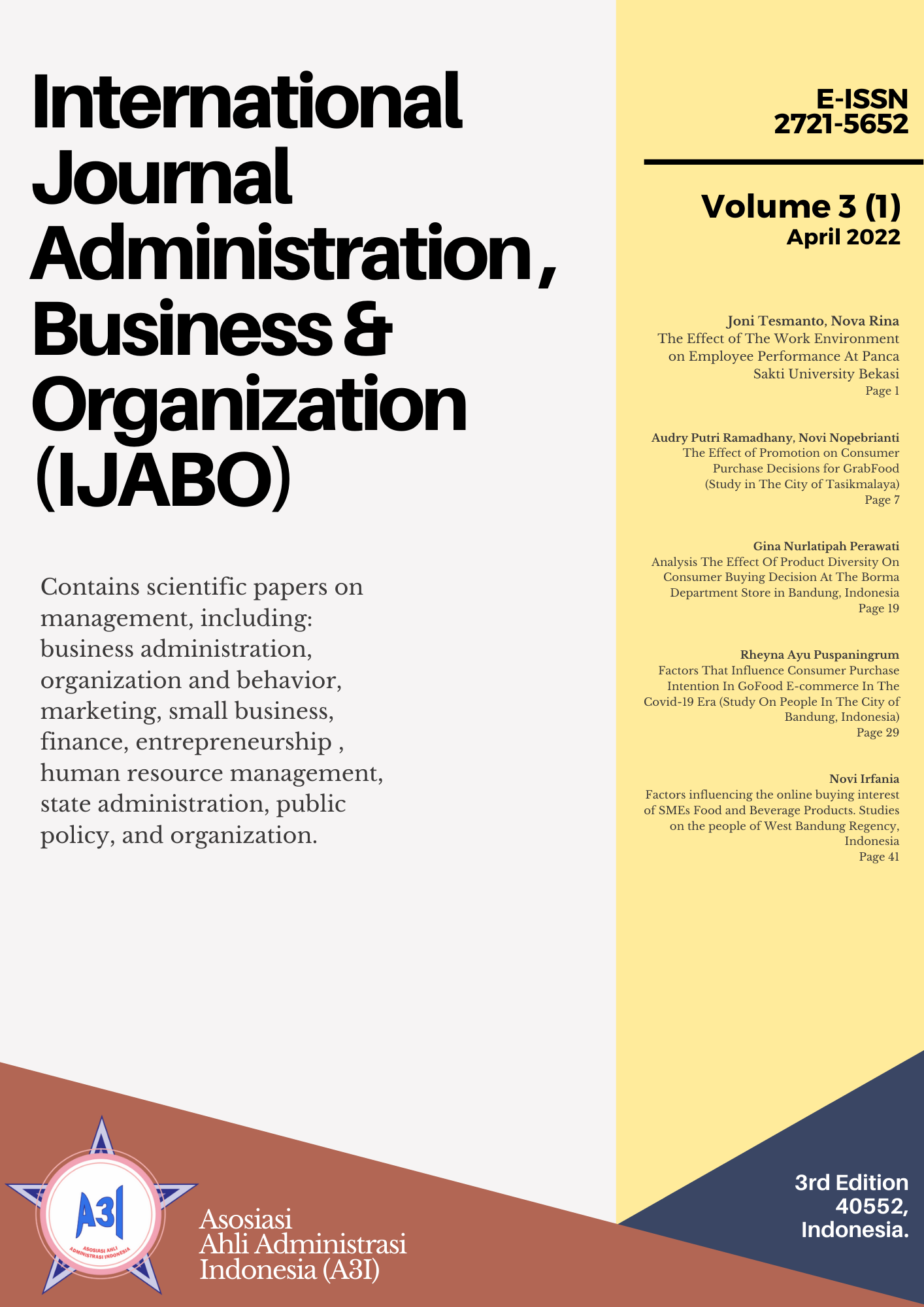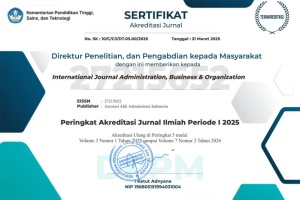Comparative Analysis of the Effectiveness of Cash Payment and Qris Payment
Abstract
This study aims to analyze the effectiveness of cash and QRIS (Quick Response Code Indonesian Standard) payment methods in transactions at Bandung State Polytechnic. A total of 104 respondents, who were students using the Business Laboratory, were selected as the sample. A quantitative approach was employed using descriptive analysis, correlation, and linear regression methods. The results show no significant difference in effectiveness between cash payments and QRIS payments. Both methods are considered effective based on transaction speed, ease of use, and convenience. These findings indicate that while QRIS is gaining popularity, cash payments still play an important role in micro-transactions. The study suggests the need for strategies to enhance digital payment adoption without disregarding conventional payment systems.
References
Bank Indonesia. (2020a). Apa Itu Uang Elektronik.
Bank Indonesia. (2020b). Sekilas Sistem Pembayaran di Indonesia.
Chaniago, H. (2022). Purchase motives of retail consumers nanostores: Evidence from Indonesia. Calitatea, 23(186), 98-103.
Chaniago, H., & Efawati, Y. (2022). The implementation of integrated marketing communication on retail business: Moslem consumers' perceptions. International Journal of Business and Globalisation, 30(2), 187-206. https://doi.org/10.1504/IJBG.2022.122664
Chaniago, H., Muharam, H., & Efawati, Y. (2023). Metode Riset Bisnis dan Permodelan. Bandung: Edukasi Riset Digital, PT.
Efawati, Y. (2016). Faktor Penentu Keberhasilan Pasar Fashion Tradisional. Jurnal Riset Bisnis Dan Investasi, 2(1), 13-13.
Efawati, Y., & Harmon, H. (2018). The Strategies of Small Business in Floriculture Industry. In of the 2nd Global Conference on Business, Management and Entrepreneurship (GCBME 2017)-Increasing Management Relevance and Competitiveness (pp. 118-124). https://doi.org/10.5220/0007115801180124
Efawati, Y., Ahman, E., & Chaniago, H. (2021, September). The effect of entrepreneurial leadership on firm innovation through innovative work behavior. In 5th Global Conference on Business, Management and Entrepreneurship (GCBME 2020) (pp. 188-194). Atlantis Press. https://doi.org/10.2991/aebmr.k.210831.037
Fadli Alamsyah. (2023). Dampak Ketersediaan Pembayaran Digital terhadap Loyalitas Pelanggan (Studi Kasus pada Pelanggan Bakso di Kab. Bandung). International Journal Administration Business and Organization, 4(2), 10–15. https://doi.org/10.61242/ijabo.23.258
Fatmaniawati. (2016). Analisis Penyebab Sistem Pembayaran Tunai Mendominasi Sistem Pembayaran Non Tunai. http://www.bi.go.id/id/sistem-pembayaran/instrumen-nontunai.
Fitra Ardana, P., & Rahmanti Ratih, N. (2022). Pengaruh Sistem Pembayaran E-Money Terhadap Tingkat Efektivitas Dan Efisiensi Pada Teknis Operasional Pembayaran Pt. Indomarco Pristama Cabang Kediri (Vol. 2, Issue 3).
Hanina, A. (2021). Efektivitas Penggunaan Qris Pada Transaksi Penjualan Potato Life Di Roxy Jember.
Puspitasari, A. N. F., Rotinsulu, T. O., & Niode, A. O. (2019). Analisis Pengaruh Transaksi Pembayaran Non Tunai Terhadap Jumlah Uang Beredar M1 Di Indonesia Tahun 2009-2019.
Saraswati, A., Hasiholan, L. B., & Minarsih, M. M. (2021). Pengaruh Kompensasi, Komunikasi, Dan Sarana Prasarana Terhadap Efektivitas Kerja Pegawai (Studi Kasus Pada Kantor Kecamatan Banyumanik). Journal of Management, 7(1).
Selvia, N. (2022). The Effect of Cashless Payment Facilities in The Dipatiukur Culinary Area of Bandung City on Consumer Satisfaction. International Journal Administration, Business and Organization (IJABO) |, 3(2), 32–42. https://ijabo.a3i.or.id
Soenjoto, W. P. P. (2018). Analisa Pengaruh Perubahan Pemakaian Uang Kartal Ke Uang Giral Terhadap Perilaku Konsumen. Jurnal Istiqro, 4(2), 185-193.
Copyright (c) 2023 Audie Fricylia Juliandhani

This work is licensed under a Creative Commons Attribution-ShareAlike 4.0 International License.
Authors who publish in this journal agree to the following terms:
- The authors confirm that they are the authors of the submitted article, which will be published (online) in the journal IJABO (International Journal Administration, Business & Organization) by the Asosiasi Ahli Administrasi Indonesia (A3i), Bandung, Indonesia. The author’s name will be evident in the article. The publisher makes all decisions regarding the layout and distribution of the work.
- Authors guarantee that the work is their own original creation and does not infringe any statutory or common-law copyright or any proprietary right of any third party. In case of claims by third parties, authors commit themself to defend the interests of the publisher and shall cover any potential costs.
- Authors retain copyright and grant the journal the right of first publication, with the work simultaneously licensed under a Creative Commons Attribution-ShareAlike 4.0 International License (CC BY-SA 4.0). This license allows the redistribution and reuse of papers provided the authorship is properly credited.
- Authors can enter into separate, additional contractual arrangements for the non-exclusive distribution of the journal's published version of the work (e.g., posting it to an institutional repository or publishing it in a book), with an acknowledgment of its initial publication in this journal.
- Authors are permitted and encouraged to post their work online (e.g., in institutional repositories or on their website) prior to and during the submission process, as this can lead to productive exchanges and earlier and greater citations of published work.

















